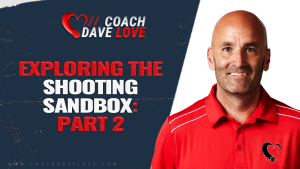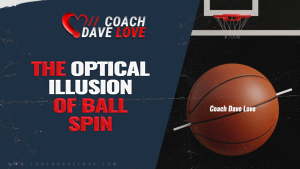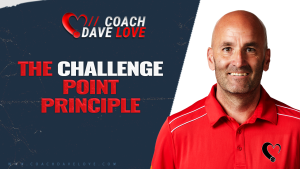When coaching basketball shooting, the types of cues we use can significantly affect a player’s ability to learn and refine their skills. Cues are essentially signals or triggers that help athletes focus and execute movements correctly. In basketball, particularly in shooting, these cues are categorized into two types: internal and external.
What are Internal and External Cues?
Internal cues focus on the body’s movements. They involve directions that make the player concentrate on specific body parts or actions, such as “snap your wrist” or “extend your elbow.” These cues make the athlete internally aware of their body mechanics during shooting.
External cues, on the other hand, direct the player’s focus towards the effects of their movement in the environment. For example, cues like “aim for the back of the rim” or “shoot over that spot” encourage players to focus on elements outside their body, which can lead to more automatic and fluid movements.
Why are External Cues More Effective?
Research in sports science suggests that external cues are generally more effective than internal cues for several reasons:
- Enhanced Performance: External cues help athletes perform better in practice and games because they promote a more automatic execution of skills by reducing overthinking about body movements.
- Better Skill Transfer: Skills developed using external cues are more likely to transfer to different situations, including high-pressure game scenarios, because they help automatize the skill.
THE TRADITIONAL APPROACH AND IT'S EVOLUTION
Traditionally, basketball coaching has relied heavily on internal cues. Coaches have often focused on correcting every little detail of a player’s posture, alignment, and mechanics. However, this approach can overwhelm players, especially during games, leading to paralysis by analysis.
The modern coaching strategy, supported by research, suggests a shift towards using more external cues. This shift does not mean internal cues are obsolete—they are necessary, especially in the initial stages of learning a new skill. However, as a player progresses, external cues become more crucial in refining these skills and making them game-ready.
MY PROCESS IN CREATING EFFECTIVE CUES
In my coaching practice, cue creation is a deliberate and phased process:
- Identifying the Habit: We start by clearly understanding and explaining the habit or skill that needs work. This often involves internal cues to ensure the player understands the mechanics.
- Transition to External Cues: As the player gets comfortable with the basic mechanics, I introduce external cues that make sense to me and align with the desired skill outcome.
- Personalized Cues: The most crucial step involves engaging the player in discovering personal cues that resonate with them. This is done through guided questions that help the player find their own effective external cues.
This approach is not based on mere opinion but is backed by solid research in motor learning and sports psychology. It emphasizes creating a learning environment that maximizes the athlete’s ability to internalize skills through cues that direct attention outwardly, resulting in more fluent and adaptable basketball shooting skills.
CONCLUSION
The transition from internal to external cues in basketball shooting coaching represents a significant shift towards a more effective, research-backed method. By focusing on external outcomes rather than body mechanics, players can achieve greater automaticity in their shooting, leading to better performance in diverse playing conditions. This method is a cornerstone of modern sports coaching, offering a clear pathway from understanding a skill to mastering it in competitive environments.



